#komon kimono
Text
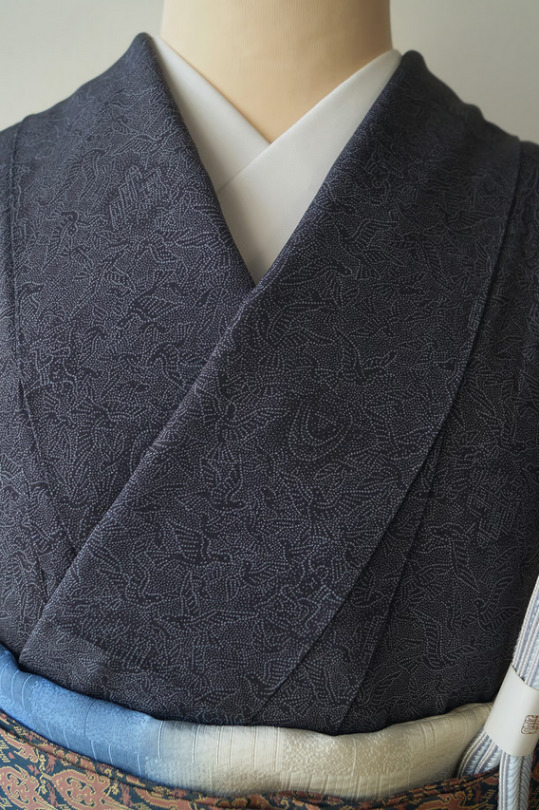
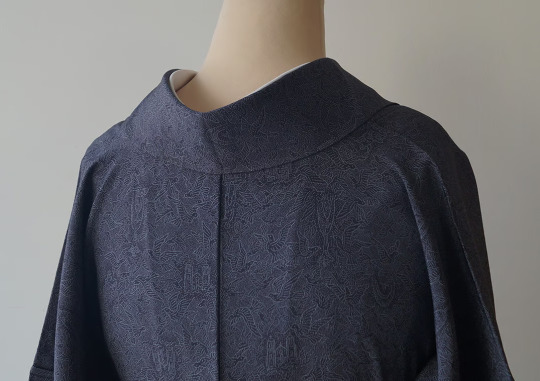

Fantastic Edo-komon kimono created by national treasure Rokutani Baiken, with an allegory pattern for "Peace" showing doves flying above people and buildings.
Edo komon is a type of kimono with itty-bitty-small patterns. Those are set on fabric using Ise-katagami (paper stencils, made waterproof with persimmon juice) and nori (paste/glue made from glutinous rice or wheat flour), and fabric is then dyed before washing the glue away.
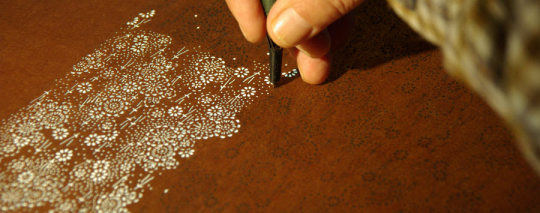
455 notes
·
View notes
Photo

You are my last secret
#masa works design#himitsu no kingyou#secret goldfish#vocaloid#hatsune miku#megpoid gumi#anime#kimono#my art#digital art#digital doodle#hotaru no haka#komon#cartoon#japanese
93 notes
·
View notes
Link

Asian Clothing Figurines Review
Asian Clothing: Japanese Kimono
Kimono Type: Tomesode: Komon
Accuracy Rating: 5/5
Explanation: Her outfit is very particular to her series, but it’s incredibly well done! The white nagajuban and tabi socks indicate she’s wearing the correct undergarments. Her ohashori and turned-out kimono hem show she’s prepared to travel also indicated by her kyahan (i.e. leg wraps). Her long black haori is a little unusual for women’s wafuku, but not impossible to find for the Taisho period. The kimono itself is a gorgeous shade of pink with a classic repeating asanoha pattern, representing vigor, resistance, and health. Her youth is indicated by her obi styling; the bright red-and-white checkered obi contrasted by her lime green obiage and medium orange obijime are excellent choices for a young woman.
3 notes
·
View notes
Text
speaking of vintage. I want to get modern kimono/obi too one day but ;~; they’re like double the price of vintage items usually
#teddy's talk#but also. I have some stuff in good condition I don't really want or think I'll ever wear that I got when I was younger.#perhaps...#well i say some stuff but it's like 1 kimono (either komon or iromuji? in good condition tho) and 2. maybe 3 obi?#top 10 cons of having bought a third of this before i thought to really learn about the different types#also realising the tsukuri obi (the ones with the pre-tied knot at the back) i bought a while ago might be useless if i do start using#a wheelchair for longer events. which the one opportunity to wear this kind of stuff would definitely be. lol#good thing i didn't end up buying two i guess?#ahhh i really can't tell whether it's komon or iromuji. it's one colour but it has like a woven pattern?#ok i think it's iromuji bc i just found some pictures of some that look a lot like it as iromuji#vs every example of komon seems to have a differently coloured pattern#OK i'm done rambling
1 note
·
View note
Photo

Il kimono al Museo Antropologico di Firenze. @lailacfirenze #lailac @museostorianaturale #kimono #furisode #komon (presso Museo di storia naturale sezione di antropologia ed etnologia) https://www.instagram.com/p/CfpNl8Pr0Ze/?igshid=NGJjMDIxMWI=
0 notes
Text
The look of... VIII: Shimizu 清水

Historical context
The first official date in the history of Shimizu Geigi is 1872, when "Machi Geisha" (まち芸者), who were distinct from "Kaku Geisha" (廓芸者), appeared. A Kenban (registry office) was established in 1877. At that time, Machi Geisha and Kaku Geisha combined were around twenty people. Only ten years later, in 1887, their number had increased to 100. The number of Geigi continued to grow.
In 1938, the number of Geigi was around 260, and they were highly regarded nationwide for their skills in art and behaviour. In 1951, a "Shimizu Geigi school" (清水芸妓学校) was opened, around 150 Geigi attending the event.

In the 1970's, Japan's period of economic growth started tapering off, interest in traditional arts dwindeled, which resulted in less work opportunities for Geigi and the number of Ryotei decreasing. In response to this, local business leaders and Shimizu Geigi started an organisation to help fostering new Geigi (Seibikai 清美会).
By 1985, their number had decreased to thirteen and the Kenban closed. In 1991, local businessmen and Geigi formed a different company (Seibi Co. 清美(株)), which worked as employer for Geigi. Due to a bad economic environment, Shimizu Odori (清水をどり) was last held in 1998, Seibi Co. was dissolved in 2004, and Haru no mai (春の舞) was discontinued in 2009. As a result of this, some of Seibi's employees became independent Geigi.
Allegedly, the number of Geigi hit rock bottom in 2011 with only two remaining. However, in 2012, around eleven Geigi worked in Shimizu. Since then, the city had a steady stream of Geigi coming and going again. At the end of this year, 2023, there are ten Geigi working in the city.
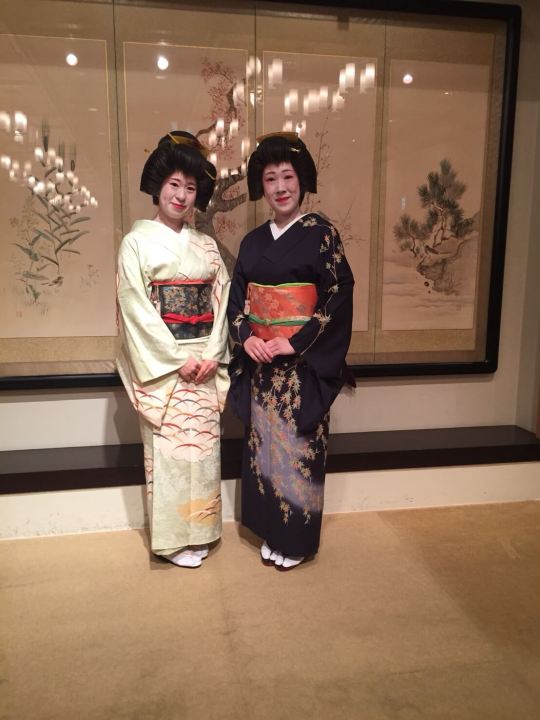
The look of Shimizu Geiko
Local Term: Geigi 芸妓
※ Hairstyle: Taka shimada, Tsubushi shimada
※ Kanzashi: Kushi, Maezashi, bekko kogai, ear of rice in the new year period
※ Kimono: Homongi, Kuromontsuki Hikizuri
※ Haneri: white
※ Obi: Taiko musubi
※ Obiage: green, pink, white, red
※ Obijime: flat, 1 knot
※ Footwear: Zori

Casual look
※ Hairstyle: Yohatsu
※ Kanzashi: none
※ Kimono: Homongi, rarely Komon
※ Haneri: white
※ Obi: Taiko musubi
※ Obiage: white, pink
※ Footwear: Zori

The look of Shimizu Maiko
Local term: Shinjin Geigi 新人芸妓
※ Hairstyle: Momoware Katsura, sometimes real hair styled (shin nihongami)
※ Kanzashi: seasonal and non-seasonal Hanakanzashi, Katsuyama, maezashi, Shidare in all age groups
※ Kimono: Furisode with shoulder tucks or no tucks at all
※ Eri: white with white embroidery, plain white, white with multicolour embroidery, other colours possible especially during summer months
※ Obi: Koken musubi
※ Obiage: flat, mostly red/silver, red/white shibori, other colours also possible (green/beige/light blue)
※ Obijime: flat or round with 1-4 knots. No obidome
※ Footwear: Zôri


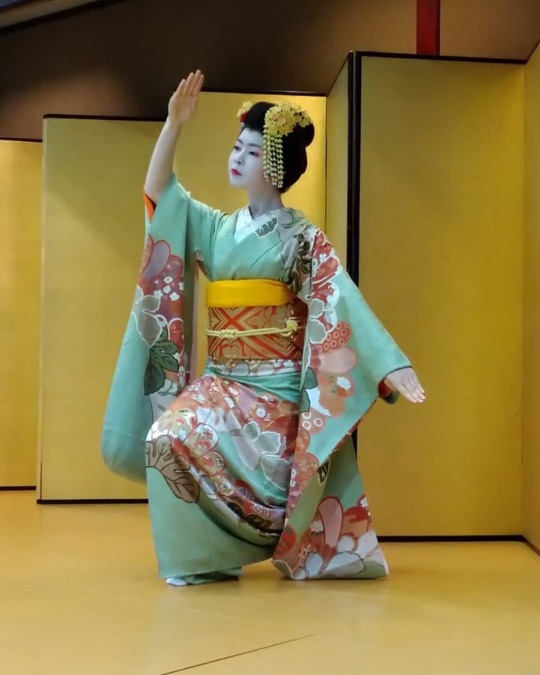

Notes
Shimizu was merged with Shizuoka in 2003. Shimizu Geigi and other traditional arts performers are backed by 静岡伝統芸能振興 Shizuoka dentô geinô Shinkô-kai/Shizuoka traditional performing arts promotion association, which is the successor to Seibikai. You might notice I didn't start this post with a historical b/w photo. There are some old photos on the Shizuoka Dentogeino homepage, but they are the size of a postal stamp. And that's it. I feel let down. No chance to explore the historical style of Shimizu.
Anyways. "The look of Shimizu/Shizuoka" was requested by @geimaiko. The layout of this post is based on geimaiko's own. Also... geimaiko originally started these series. If you liked this post, you should go and thank her, because without her, there would be no "the look of..." ;)
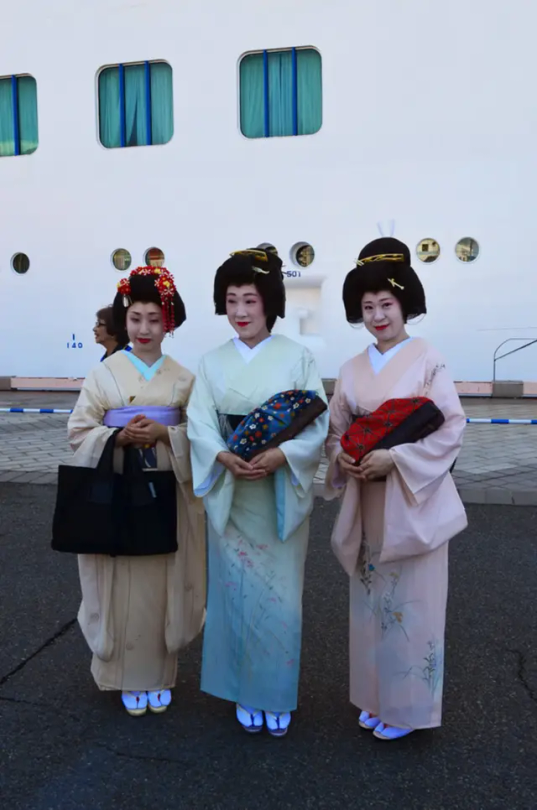

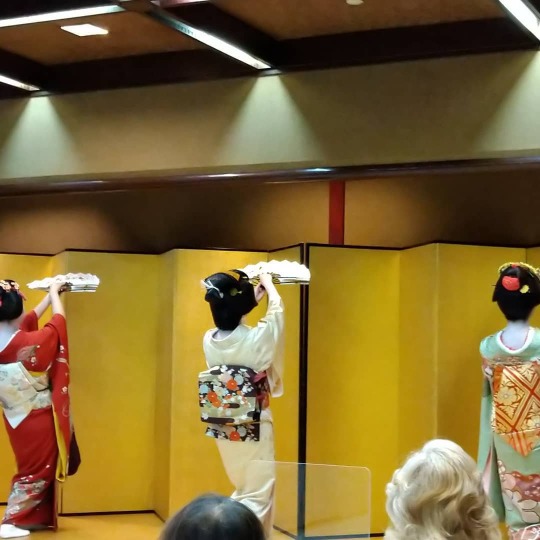
Sources
https://www.shizuoka-dentogeino.jp/geigi/shizuoka_history/, https://www.shizuoka-dentogeino.jp/geigi/shimizu_history/, http://www.shimizu-port.jp/geigi.html, https://www.nikkei.com/article/DGXNZO41971500Z20C12A5L61000/ (headline and preview only), https://www.youtube.com/@shizuokadentogeino/videos
Pictures: Komachi May 17, Makoto May 17, Komachi+Makoto Oct 17 (sources nowhere to be found), Sakurako+Fukutaro Apr 22, Kikuno+Umeka Nov 14, Iroha Jun 20, Iroha Oct 20, Fukutaro Oct 20, Ichiryo+Komachi+Makoto ~2016, Komachi+Sakurako Apr 18, Fukutaro+Sakurako Oct 18, Iroha+Fukutaro+Sakurako Oct 20
#mg#geisha#geiko#maiko#hangyoku#geigi#shizuoka#kimono#komachi#makoto#sakurako#fukutaro#kikuno#umeka#iroha
48 notes
·
View notes
Photo

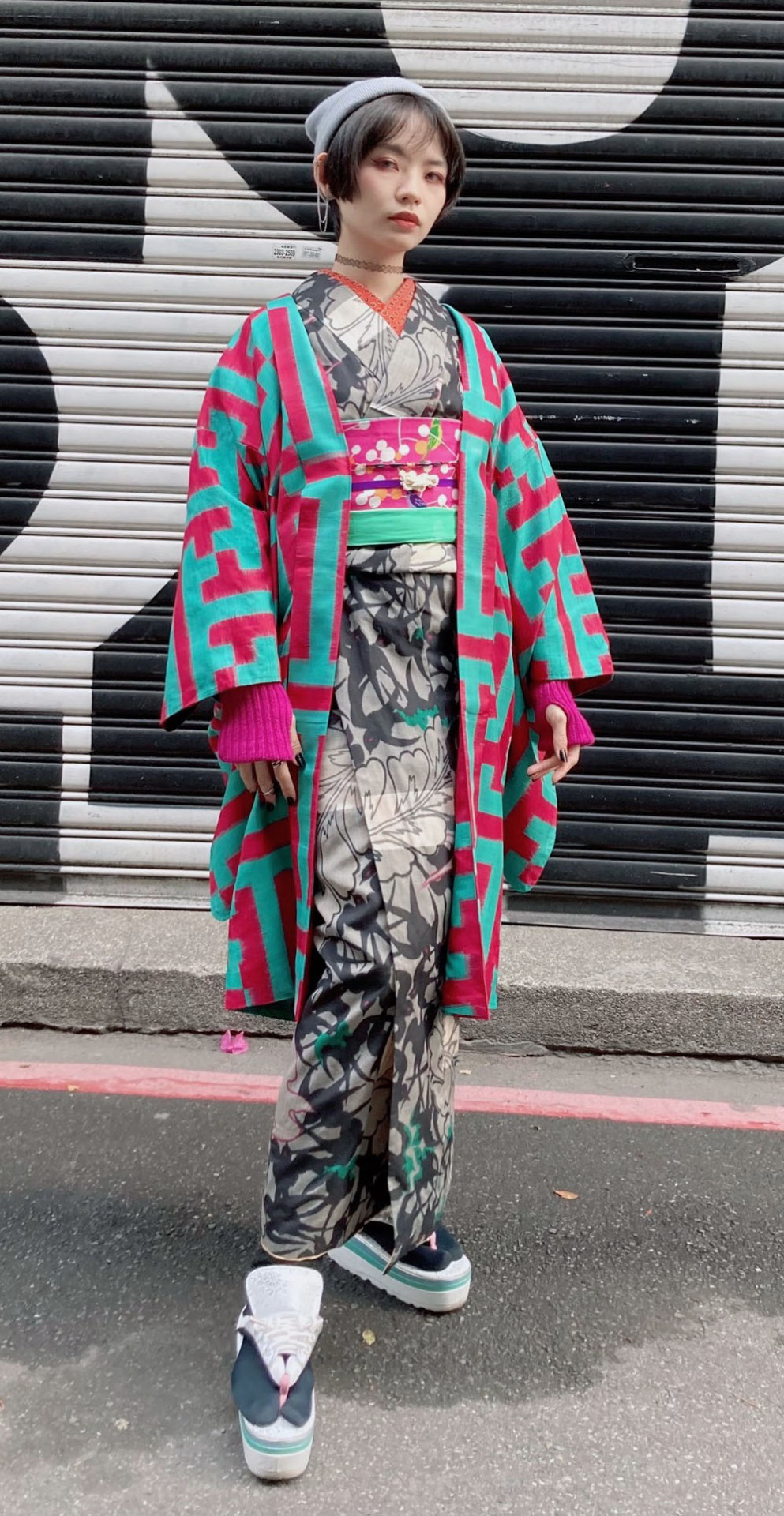
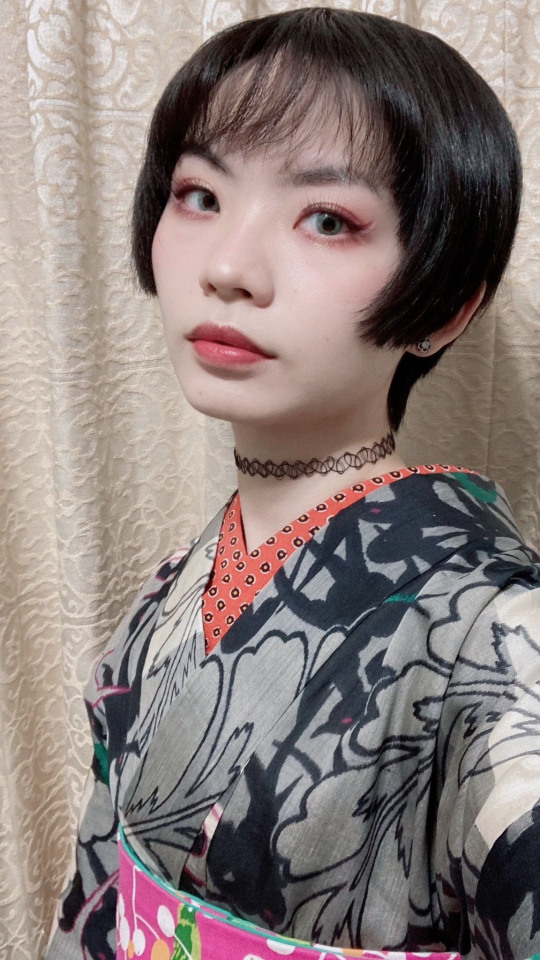
Long-awaited kimono shoot in Taiwan (*´д`*)
Street-style Japanese-Western eclectic outfit Swallow pattern meisen komon, small bird pattern half-width obi geometric pattern meisen long haori, decorated with flowers and bird sashes, sneakers Zori are all Japanese style, but the combination of colors and accessories gives a modern feeling
Kimono: Moduhashi Obi: Something I asked for from a friend Obi Strap: Mercari Haori: Oedo Antique Market Zori: Shimaiichi. Text by 緑🌈和装被写体 依頼受付中
@SevGreen0326
140 notes
·
View notes
Note
Hi, is there any rule on which kimono should be used for kotohajime? It seems to me most geimaiko went for iromuji or komon, but I think I spotted a few tsukesage too... so I'm a bit confused by this variety when it comes to formality. Thanks!
Usually it depends on what's available and where the person lives, which all boils down to seniority. Maiko tend to wear komon while junior geiko will wear iromuji and senior geiko will wear either iromuji or tsukesage. It's not unusual for junior geiko who still live at the okiya to wear komon though, hence why where they live is also important ^^
11 notes
·
View notes
Text
I'm so confused if Vinestaff's kimono is a komon(Type of informal/casual kimono worn to casual outings, such as; going out to eat, shop etc. that features repeated patterns, commonly nature themed) or a yukata(Another type of kimono, similar to komons but is worn to summer festivals and is much lighter(in weight) and is one layer only(minus any underwear). And is kindof like a bathrobe or hotelrobe, and is also one of the undergarments for a traditional kimono)
5 notes
·
View notes
Text

Desperately trying to figure out what the hell these are called because I want to make a stringtaffy fankid HELP
Edit: I FOUND OUT WHAT IT IS! It’s called Hana-komon. Hana-komon cookie. Got a nice ring to it. Unfortunately my phone keeps autocorrecting it to kimono
Wait it might actually be called Taiki hana-komon? But it still brings up the same results with or without the first part so I’m just gonna call her Hana-komon cookie
#cookie run#cookie run ovenbreak#string gummy cookie#maple taffy cookie#don’t fuck with stringtaffy fans there’s three of us#stringtaffy#I also really wanna buy some#had them once and loved it#I found the picture by looking up ‘Japanese hard candy btw’#I’ve seen a few videos of it being made too but it was always just called hard candy
4 notes
·
View notes
Text
Himeko - Refs - Other Stuff

Kichiya Knot:
Kimonos that use this style are:
- Everyday Kimono
- Iromuji
- Furisode
Bunko Knot:
Kimonos that use this style are:
- Yukata
- Usumono / Natsumono:
- Komon
- Cropped Kimono
Karuta Musubi / Card Knot:
Kimonos that use this style are:
- Autuam Kimono
- Tsukesage
- "Ball Gown" Kimono
Otaiko Musubi / Nagoya Obi:
Kimonos that use this style are:
- Winter Kimono
- Tsukesage
- Houmongi
- Irotomesode
Hitotu / Darari Masubi:
Kimonos that use this style are:
- Susohiki / Hikizuri
- "Evening Gown" Kimono
Double Bow Musubi:
Kimonos that use this style are:
- Bell Skirt Style Kimono
- Short Skirt Furisode

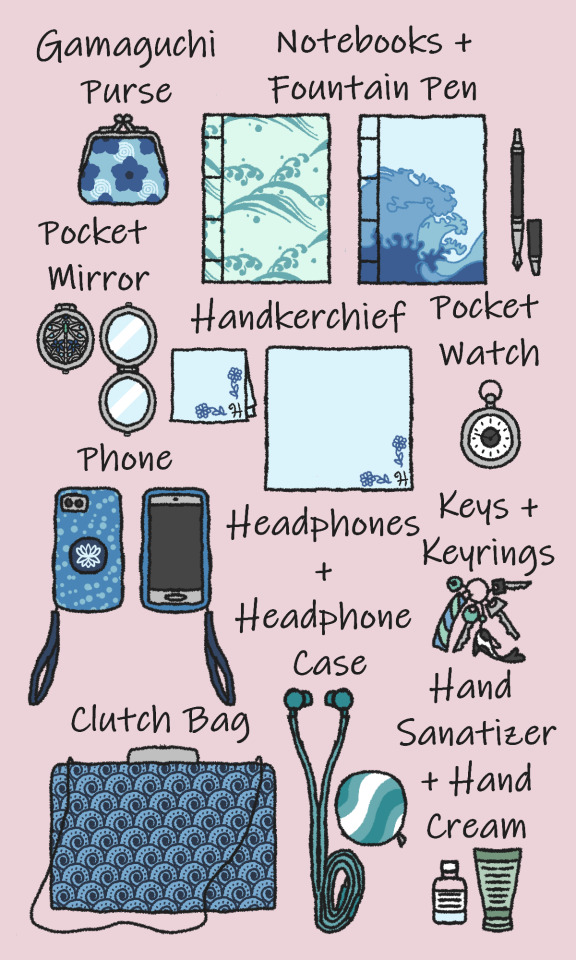
Left:
The following items hear Himeko has had since the Edo Period:
- Kinchaku Bag
- Coin Purse
- Hakoseko Pouch (for cosmetics)
- Kiseru Pipe + Tobacco Pouch
- Combs + Comb Boxes
- Hanko Set
- Sensu Fans + Fan Cases
- Uchiwa Fans
Right:
The following Items are ones Himeko has had since the Meiji Period
- Gamaguchi Purse
- Notebooks + Fountain Pen
- Pocket Watch
- Pocket Mirror
- Handkerchief
The following Items are ones Himeko has had in recent years (modern day)
- Phone
- Headphones + Headphone Case
- Keys + Keyrings
- Hand Sanitizer + Hand Cream
- Clutch Bag
#original#original character#ocs#oc#oc character#original design#character design#character art#fae#faerie#fae folk#fairies#fairy#Himeko#object design#item design
4 notes
·
View notes
Text
Everyday wear for the warrior class - Nagakamishimo and Hankamishimo
(as worn by samurai of the Edo period - great charts by Nadeshico Rin). You can find more about samurai ranks and their regulated attires under the tag "samurai kimono".
The Nagakamishimo (here with noshime)
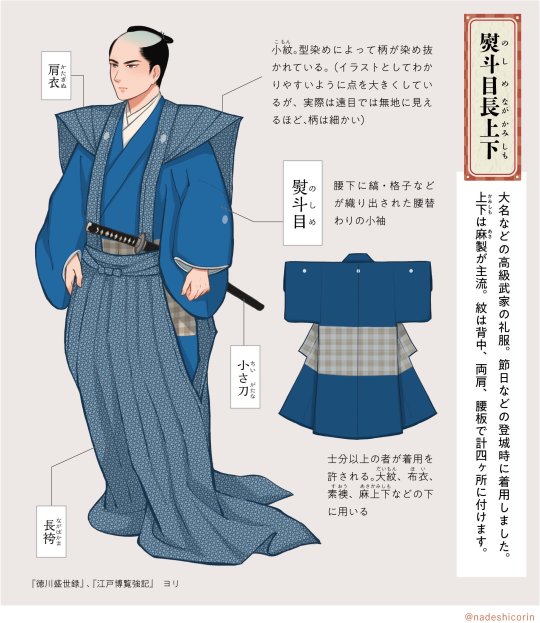
長上下 Nagakamishimo was worn by all upper ranked samurai.
肩衣 Kataginu - sleeveless overvest, with startched shoulders. It bore back and shoulder 紋 mon (family crests).
It's said to be an evolution of 素襖 Suô attire with detached sleeves.
Formal ones were also entirely covered with tiny dyed patterns, the 小紋 komon (clans tended to have their favourite ones, used by all their retainers).
長袴 Nagabakama - hakama pants with long trailing legs.
Formal look required it to match the kataginu.
熨斗目 Noshime - kosode (=ancestor of the kimono) with stripes or lattice pattern at waist area. Note the mon family crest on the sleeves and back.
Noshime was also worn under more formal sets, like the daimon, suô, hoi, etc.
小さ刀 Chîsagatana - small katana
The Hankamishimo

Also called 継上下 tsugi-gamishimo, 半上下 hankamishimo is the official everyday wear for all Edo period samurai.
Main difference with nagakamishimo are the shorter pants, far more suited to everyday life. Colors and fabrics were not especially regulated.
半袴 Hanbakama - ankle lenght pants, shorter than the more formal nagabakama. Today, it's simply called hakama.
脇差 Wakizashi - short sword worn by samurai, depending on the era is part of the 大小 daishô (sword set with a katana and wakizashi)
紋付小袖 Montsuki-kosode - kosode (=ancestor of the kimono) adorned with family crest
#japan#fashion#fashion history#samurai fashion#nadeshico rin#edo period#samurai#buke#warrior class#edo era#reference#ressources#men kimono#着物#Nagakamishimo#Hankamishimo#kataginu#nagabakama#noshime#Chîsagatana#hanbakama#wakizashi#daishô#Montsuki-kosode#kosode
175 notes
·
View notes
Photo
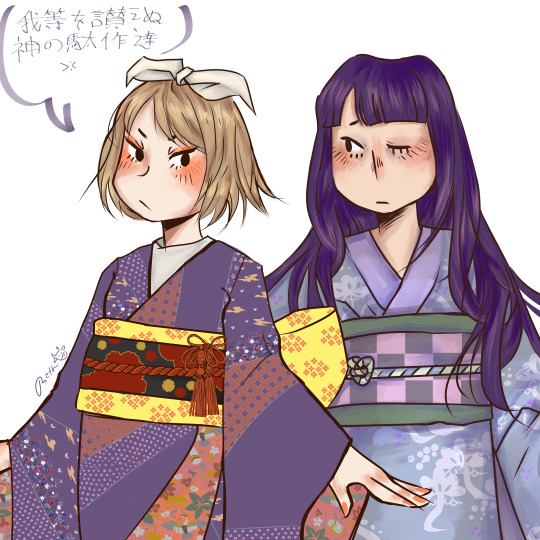
>:C
#masa works design#onibi series#onibi#shikyou the amanojaku#masa works design emi#kimono#kagamine rin#kawaii#anime#cartoon#cute#doodle#hikizuri#komon
115 notes
·
View notes
Text
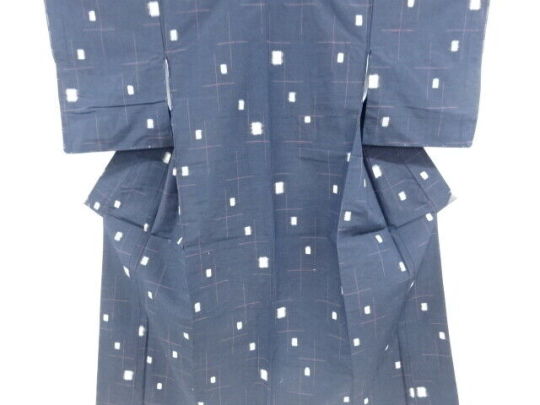
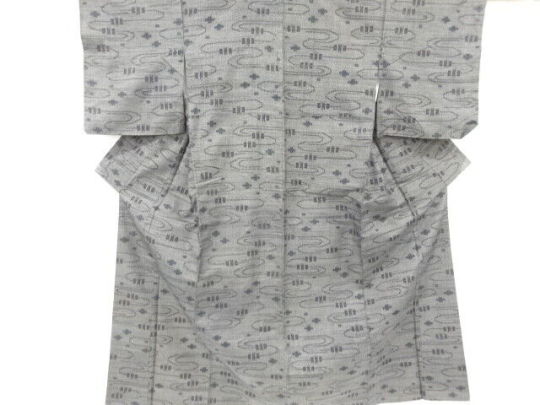

6674388 JAPANESE KIMONO ANTIQUE KIMONO TOKAMACHI TSUMUGI WOVEN STREAM ebay sou_japan
6823767 JAPANESE KIMONO ANTIQUE KIMONO TSUMUGI WOVEN SHIKISHI PATTERN
6825601 JAPANESE KIMONO VINTAGE KOMON KIMONO FLOWER & FOLDING FAN PATTERN
4 notes
·
View notes
Text

okay so my old blog got deleted so that’s ✨fantastic✨ so here’s my new blog with some new art. from the top!
Aph Hungary and Aph Chibi Italy in Houmongi/Komon Kimonos!
Hungary’s kimono is a Houmongi kimono with a nagoya obi and a simply tied obijime. I made sure to include a Kanzashi that’s similar to her flower hairpin in canon! just changed the colors to match her coord better :) Italy’s is a elegantly patterned Komon kimono with a Fukuro obi and flower-tied objime. I kept the headscarf he wears in canon because i was originally going to add an apron, but i legit forgot. 😭 these kimono coords are inspired by ones in my collection or ones i’ve been ogling to buy for myself. i wish i could yoink hungary’s kimono for my collection lol.
#hetalia fanart#hetalia#aph hungary#aph italy#kimono#houmongi#aph hungary fanart#kimono art#fanart#fandom#hetalia fandom
23 notes
·
View notes
Photo

Completed❣️Awase Edo-komon kimono . Custom order from abroad . 🤗💕 Custom order is always welcome❣️Please contact me via Etsy KimonoYukiko❣️ www.kimonoyukiko.etsy.com #etsy #etsyseller #etsysellersofinstagram #etsyartist #kimono #kimonotailor #kimonotailoryukiko #customkimono #japanesekimono #japaneseauthentickimono #edokomon https://www.instagram.com/p/Ci9IsKZLzKz/?igshid=NGJjMDIxMWI=
#etsy#etsyseller#etsysellersofinstagram#etsyartist#kimono#kimonotailor#kimonotailoryukiko#customkimono#japanesekimono#japaneseauthentickimono#edokomon
8 notes
·
View notes